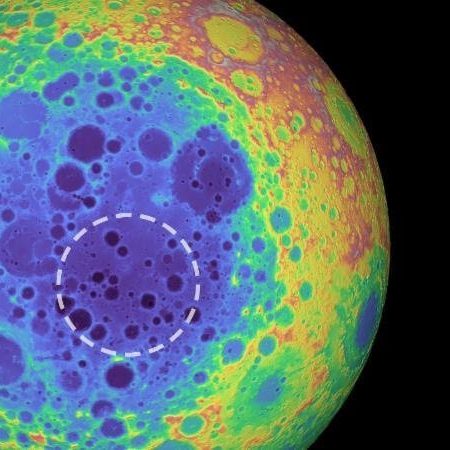
A false-color topological map of the Moon's South Pole reveals a region where a large metallic asteroid might lie buried below the surface. Image credit: NASA/Goddard Space Flight Center/University of Arizona

Artist’s drawing of the twin spacecraft that comprised NASA’s GRAIL mission. Image credit: NASA/JPL-Caltech/MIT.
The large blue region, known as the Aitken basin, is the largest impact crater on the Moon, more than a thousand miles across. The circle in the map shows an area within the basin where the local gravitational tug reveals a large object buried nearly 200 miles below the surface. The mass and size of the object indicate it must be very dense, leading scientists to speculate that it could be the remains of an iron-rich asteroid that smashed into this region billions of years ago.
“Imagine taking a pile of metal five times larger than the Big Island of Hawaii and burying it underground,” says Peter James of Baylor University. “That’s roughly how much-unexpected mass we detected.”

Mountain ranges like the Himalayas have greater concentrations of mass. and hence stronger local gravitational fields.
Michael
Sign up for AstroAlerts from Lowell Observatory’s Deputy Director for Science, Dr. Michael West, to receive breaking news stories from the world of astronomy, as well as information about upcoming meteor showers, eclipses, International Space Station sightings and other astronomical events.
Want a taste of what you will be receiving? Click HERE for an archive of the most recent AstroAlerts sent to subscribers.